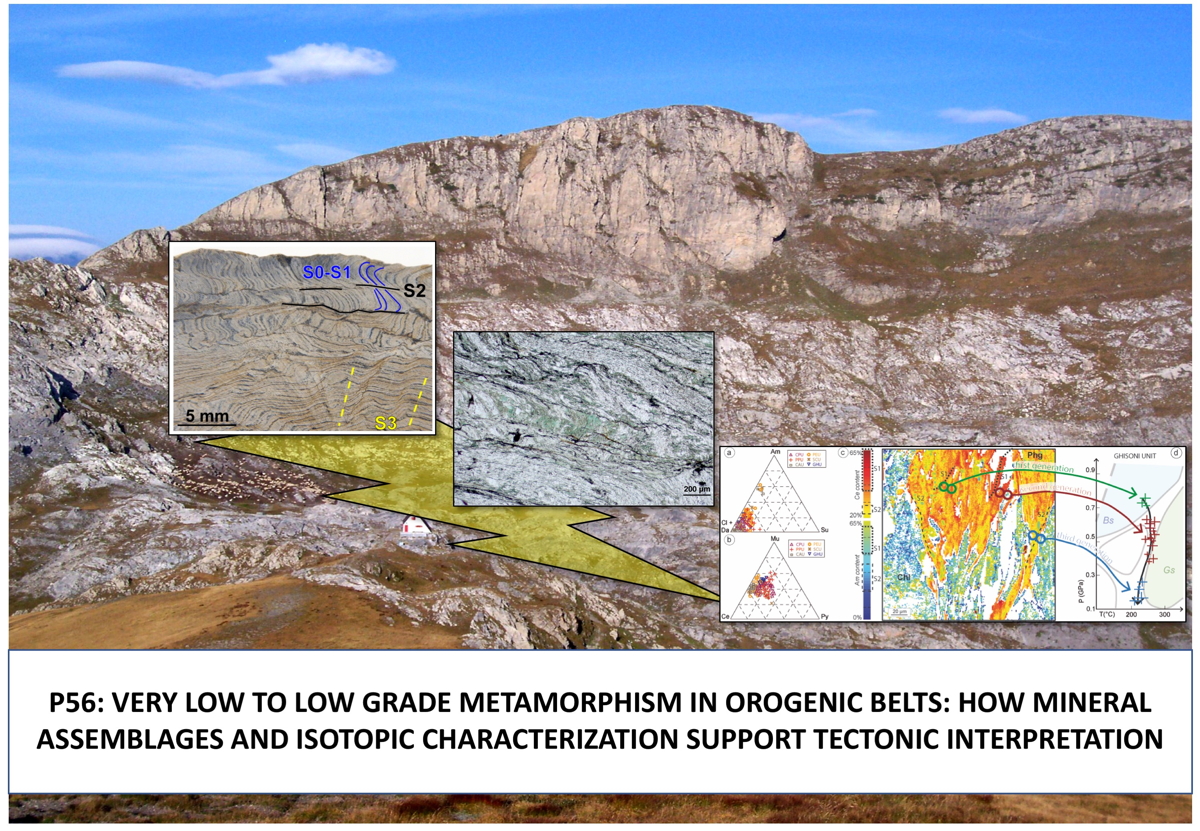- Laura Federico – Università di Genova
- Maria Di Rosa - Università di Pisa
- Eugenio Fazio - Università di Catania
Orogenic belts are characterized by different tectonic units: the high-temperature (HT) - high-pressure (HP) ones have been studied in detail for many decades and thus their peak PT conditions have been defined with good approximation. Only in much more recent times, and thanks to technological progress, has the PTt evolution of very low- or low-grade units involved in subduction and collision processes received increasing attention.
Metamorphic rocks recording LT-blueschist and -greenschist facies conditions, together with rocks affected by late-orogenic (hydrothermal) fluid circulation, are still a challenging research topic due to the frequent lack of equilibrium of metamorphic reactions, small-scale minerals and frequent mineralogical/geochemical inheritance from protoliths. Thanks to advances in methods such as geothermobarometry (e.g. peudosections), isotopic dating, fluid inclusion studies - to name but a few - it is now possible to more accurately define their tectono-metamorphic history.
This session welcomes contributions on the study of low- and very low-grade metamorphic units (PT conditions, age, PTdt trajectories, etc.) to decipher the processes activated in the upper-middle crustal levels during all the tectonic phases of an orogeny. Mineralogical, petrostructural, geochemical and geochronological studies that contribute to unravel the tectonic evolution of an orogen are therefore welcome.
Metamorphic rocks recording LT-blueschist and -greenschist facies conditions, together with rocks affected by late-orogenic (hydrothermal) fluid circulation, are still a challenging research topic due to the frequent lack of equilibrium of metamorphic reactions, small-scale minerals and frequent mineralogical/geochemical inheritance from protoliths. Thanks to advances in methods such as geothermobarometry (e.g. peudosections), isotopic dating, fluid inclusion studies - to name but a few - it is now possible to more accurately define their tectono-metamorphic history.
This session welcomes contributions on the study of low- and very low-grade metamorphic units (PT conditions, age, PTdt trajectories, etc.) to decipher the processes activated in the upper-middle crustal levels during all the tectonic phases of an orogeny. Mineralogical, petrostructural, geochemical and geochronological studies that contribute to unravel the tectonic evolution of an orogen are therefore welcome.
Low-grade metamorphism, orogenic belts, subduction and exhumation processes

